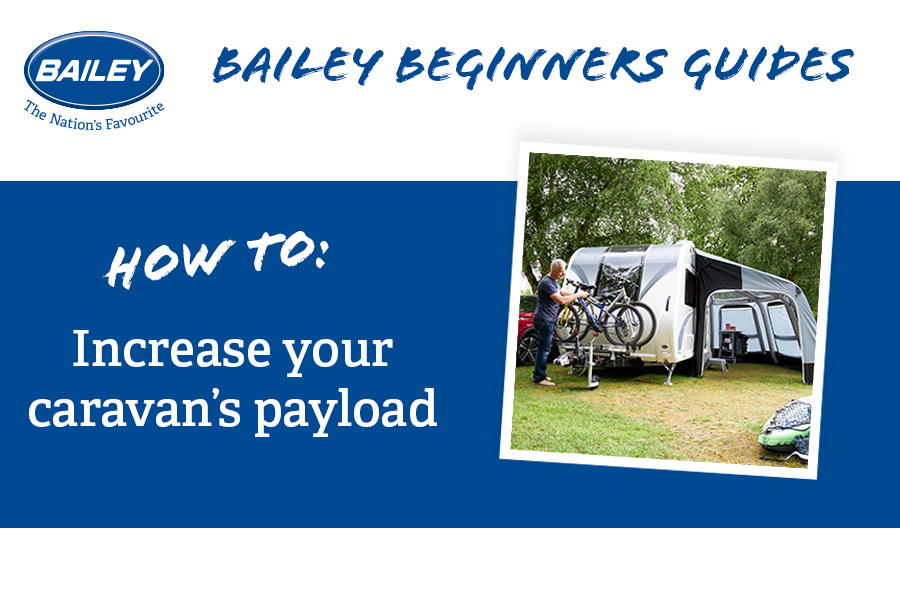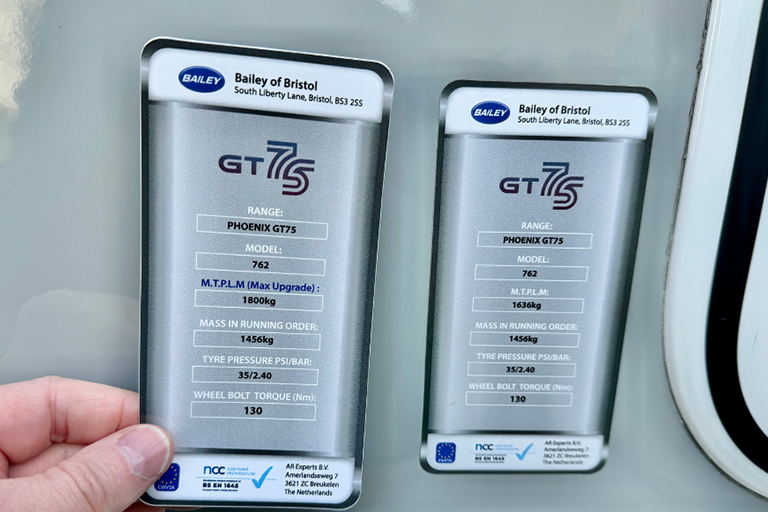Caravan Weight Plate Upgrade: How to increase your caravan's payload

However, if you are nearing the upper levels of your payload, it may be possible to increase it. In this guide, we’ll discuss MROs, MTPLMs, and payloads, including how to check if your caravan is eligible for a payload upgrade.
What is MRO and MTPLM?
The caravan’s MRO, or Mass in Running Order, is its unladen weight, and this figure includes 1x gas bottle (approximately 10kg) and the mains hook-up lead (4kg).In addition, if a ‘wet’ ALDE central heating system is fitted as part of the standard specification, 10kg for single-axle models and 12kg for twin-axle models will be added for fluid within the system.
Your caravan’s MTPLM, or Maximum Technically Permitted Laden Mass, is its maximum weight, which must not be exceeded when fully loaded.
How do I calculate my caravan’s payload?
Your caravan’s payload figure won’t be displayed on the data plate, but it’s easily calculated by subtracting the MRO from the MTPLM. For example, if a caravan’s MTPLM (total weight) is 1636kg and the MRO is 1456kg, you have 180kg of payload.
Should caravanning accessories be deduced from the available payload?
Yes. Except for one gas bottle that’s included in the MRO figure, everything fitted to your caravan since it left the factory should be deducted from your available payload. For example, an air conditioning unit may weigh 27kg, a motor mover 30kg, a solar panel 10kg, etc. As for other caravanning kit, it’s worth weighing individual bags and items on bathroom scales to ensure the combined total doesn’t exceed the payload figure.
How do I upgrade my caravan’s weight plate?
Not all caravans are eligible for a weight plate upgrade, and if they are, any extra payload is likely to vary between models. Your caravan’s chassis will have a maximum weight-carrying capacity, and any available payload increase will depend on the caravan’s MTPLM and the chassis used. For example, the Bailey Phoenix GT75 762 has an MRO of 1456kg and an MTPLM of 1636kg. This gives a payload of 180kg. However, because the 762 is based on a twin-axle 1800kg chassis, the weight plate upgrade would increase the payload to 344kg.
Why aren’t caravans automatically plated at the maximum weight?
Using the Bailey Phoenix GT75 762 as an example, having an MTPLM of 1636kg instead of 1800kg gives the caravan a plated weight that fits with a wider variety of tow cars. Plus, the standard 180kg payload is usually sufficient for a family holiday. Before B+E entitlement was automatically granted to B licence holders, the lower weight helped to keep outfit weights below 3500kg.

How do I upgrade my caravan’s weight plate?
Upgrading is a simple process and can be carried out by your Bailey retailer or by visiting Prima Leisure.
To check if your caravan is eligible for a weight plate upgrade, click here to check if your caravan can be upgraded and by how much.
It’s worth noting that no physical changes will be made to your caravan, as any upgrades will be decided by the chassis fitted to your caravan.
When upgrading my caravan’s weight plate, is it just a sticker?
When the upgrade is complete, you will receive a new data sticker to replace the old one. However, the upgrade process involves much more than just applying a sticker. The National Caravan Council operates the CRiS scheme, and the upgrade fee includes administration costs associated with the changes.
As a customer, you only need to remove the old weight plate and replace it with the new one. If you have ordered a brand-new caravan, you can ask your retailer to add the new plate before you collect the caravan.
How do I attach my upgraded caravan weight plate?
The weight plate is in the form of a sticker. Remove the old sticker by peeling it from the body. Heat from a hair dryer or similar may help if the sticker is cold. Clean the area and ensure no dirt, dust, grease, or residue remains. Peel the backing from the sticker and apply.
Jump to:
- Beginners Guide to Caravanning – Homepage
- How to load your caravan
- How to set your caravan’s noseweight
- How to hitch up your caravan
- How to tow and reverse your caravan
- Arriving on site: How to level your caravan
- Arriving on site: Electrical system
- Arriving on site: Gas system
- Arriving on site: Water system
- Arriving on site: How to set up your Alde or Truma heating system
- Arriving on site: Toilet cassette
- Arriving on site: Fridge
- Arriving on site: Hob, oven and grill
- Arriving on site: How to adjust your caravan’s TV aerial
- Arriving on site: How to secure your caravan
- Caravan Weight Plate Upgrade: How to increase your caravan’s payload
- Glossary
Previous
Arriving on site: How to secure your caravan
Next
Glossary